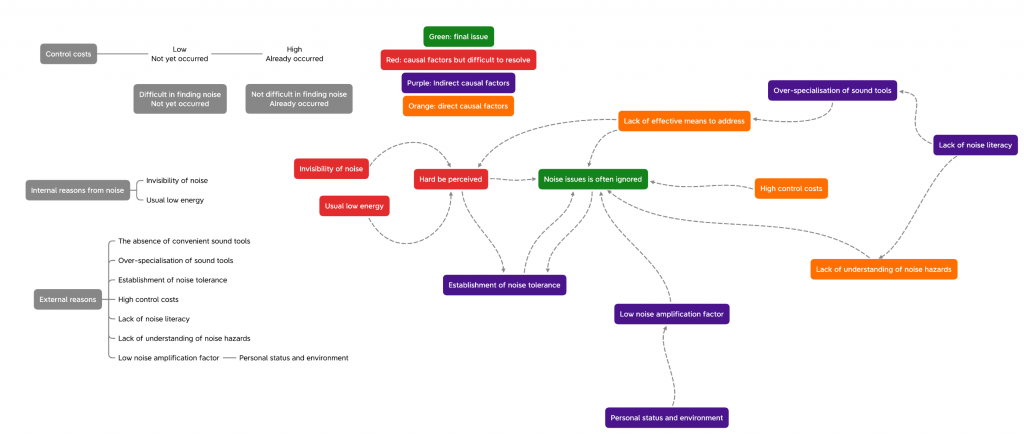New: How can we help urban residents to prevent, optimise and become aware of noise problems in home environment?
Through in-depth secondary user research and secondary research, I have gained a more comprehensive understanding of the complex relationship between urban residents and noise. From the initial single causal factor to a multi-causal factors complex network, the multidimensionality and complexity of noise issues have become increasingly evident. Although many existing control strategies have effectively alleviated topics such as air traffic noise, the everyday noise issues are not covered by the policy and most strategies remain serious.
I conducted a weight analysis of various possible causal factors to deeply analyse the natural connection between urban residents and daily noise issues. These factors intertwine to form a complex network that makes solving the noise issues more challenging.

By reviewing the entire logical chain, user research highlights noise amplification, and secondary research points out the imperfections in everyday noise and management strategies leading to a gap. Then, based on these studies, the weight analysis of causes further explains the issues this gap faces, and also points out the most accessible points of intervention such as “prevention,” “strategies,” and “costs” among other critical factors. At the same time, these key factors can be understood as “powerless to noise.” This refers to the fact that although people can perceive noise, they often feel powerless against it. In most cases, when people become aware of a noise issue, it is already difficult to control through conventional means. Thus, people often choose to ignore the noise.
Therefore, this multi-angle scrutiny of causes, timelines, costs, and more leads to refining the question and the new intervention measures.